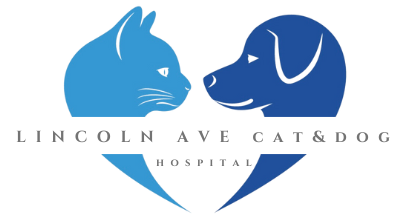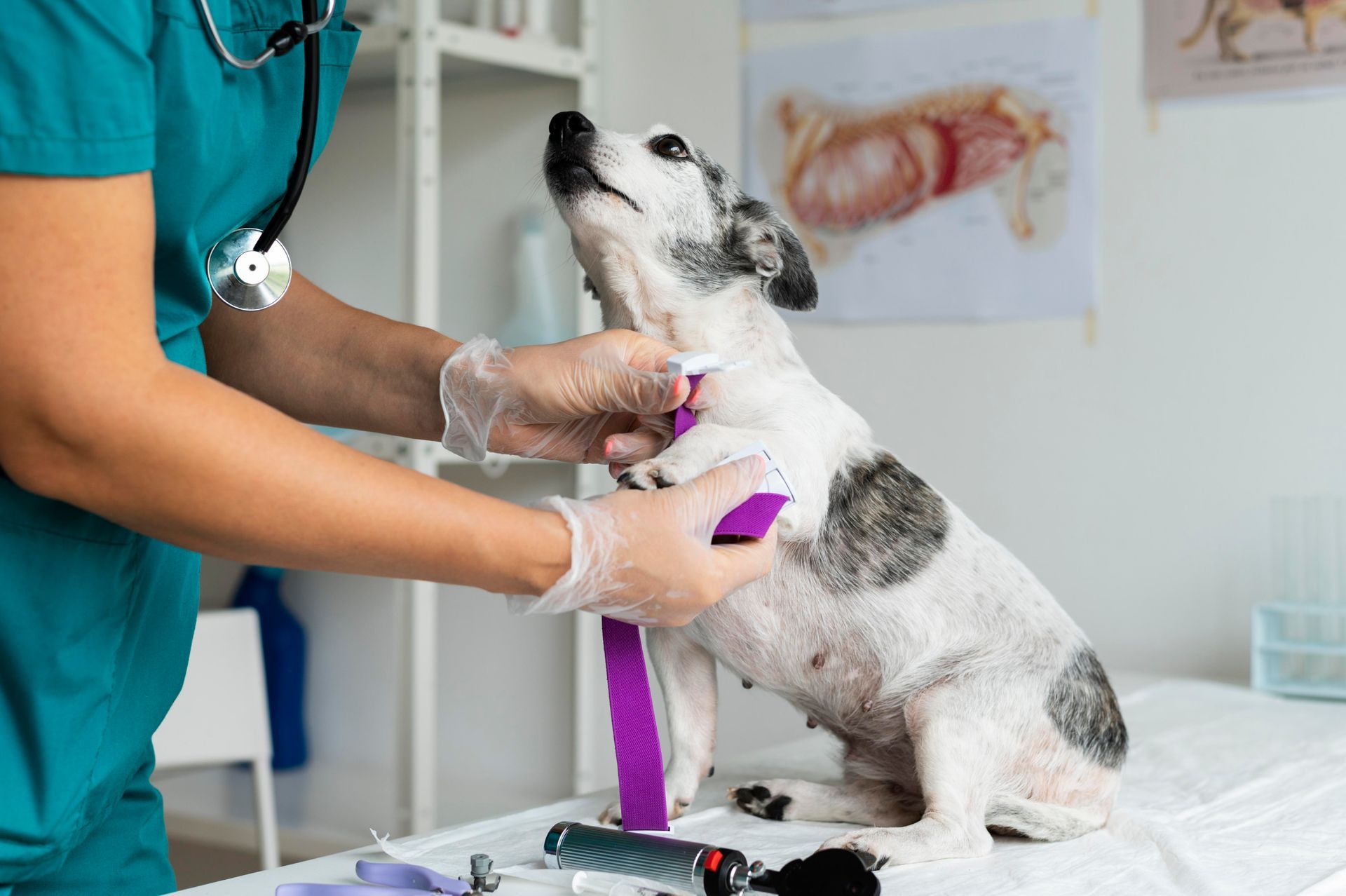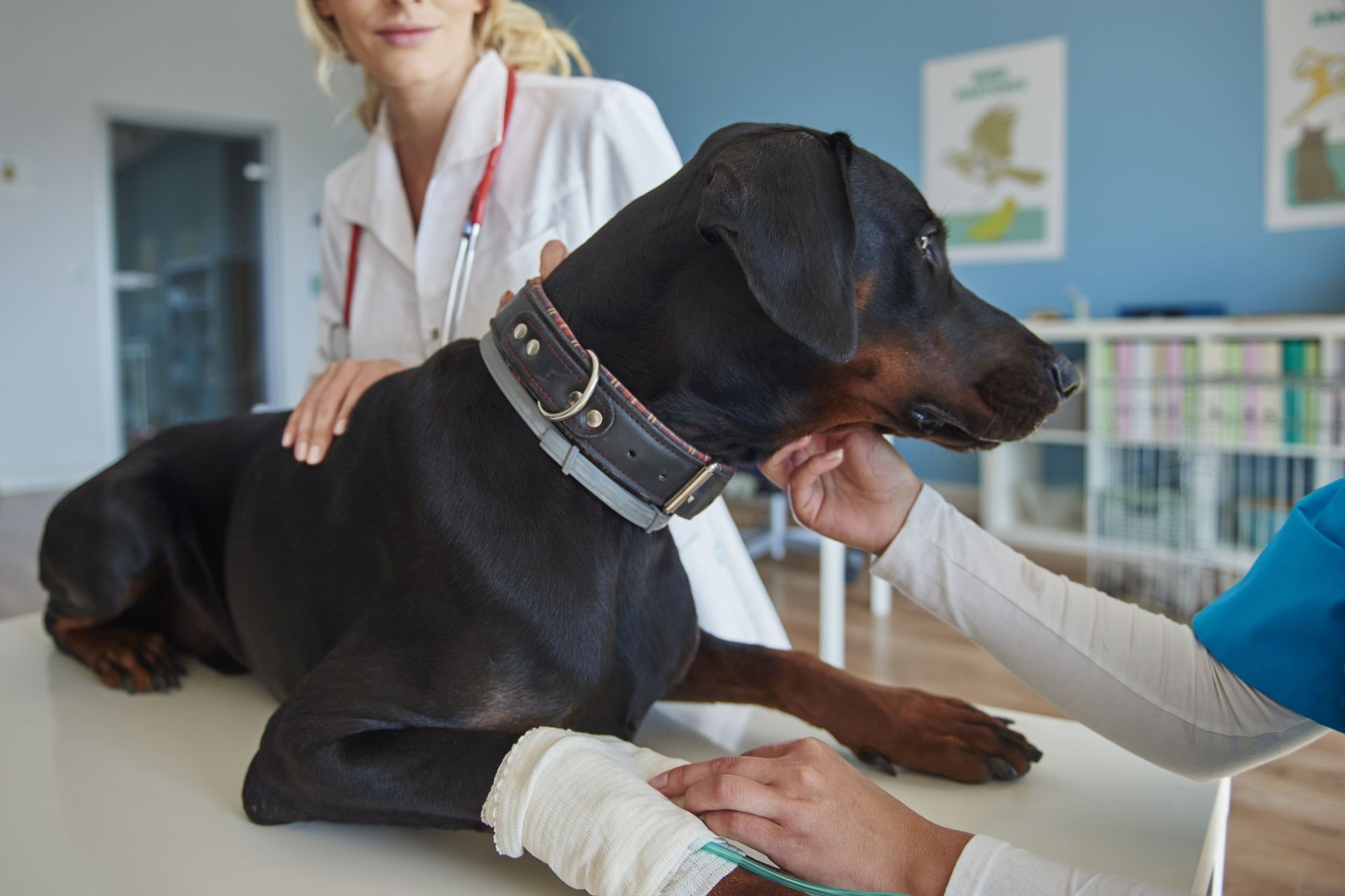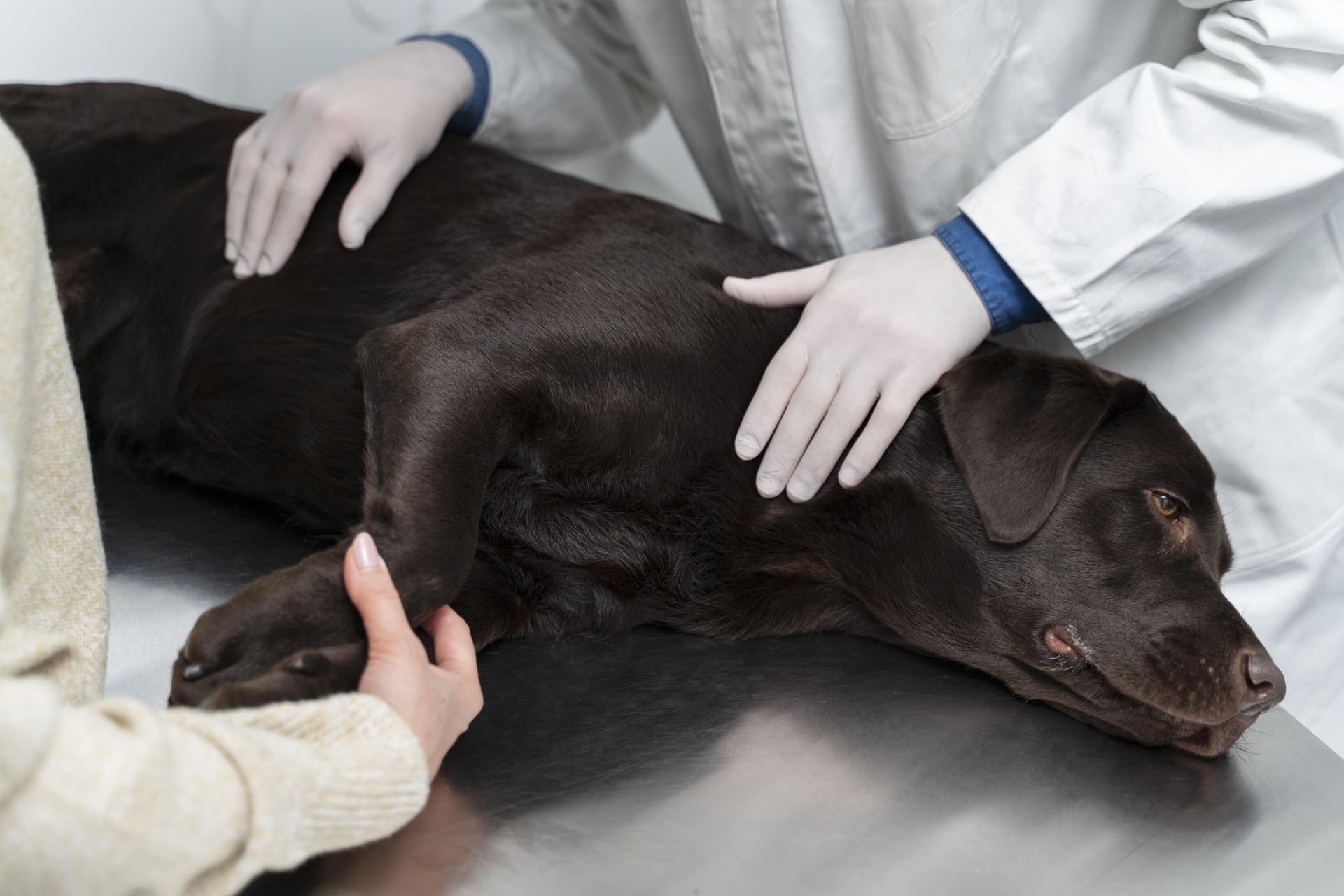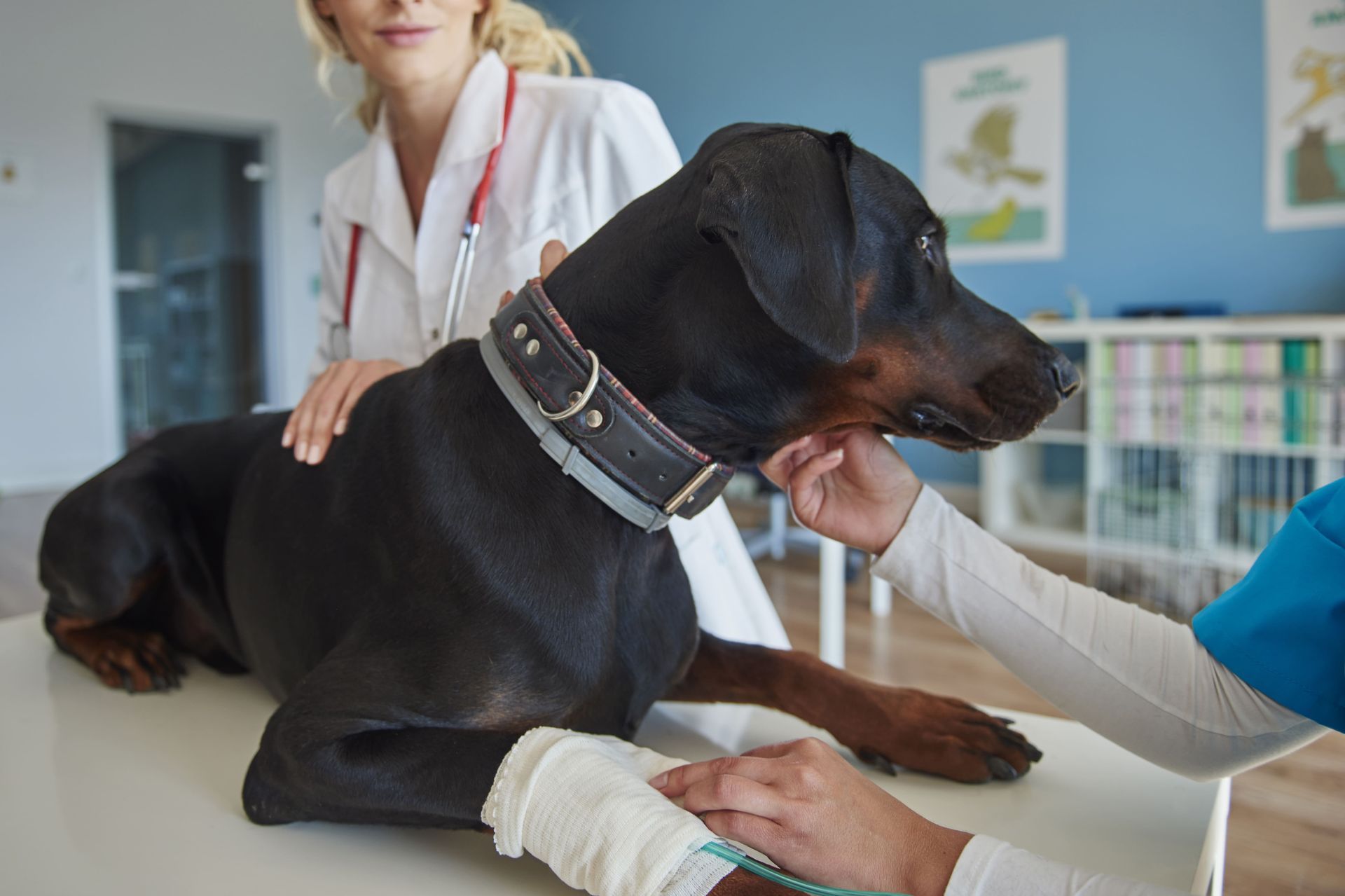What to Do in a Pet Crisis | Emergency Vet Guide | LA Cat & Dog
Recognizing a pet emergency
If your pet shows any of these signs, it might be an emergency:
- Difficulty breathing
- Severe bleeding
- Loss of consciousness
- Trauma, such as a fall or being hit by a car
- Seizures
- Ingestion of poisonous substances
- Bloated or distended abdomen
- Inability to urinate or defecate
- Sudden and severe weakness
- Difficulty standing or walking
Steps to take during a pet crisis
In a pet crisis, it's important to act quickly and stay calm. Here are the key steps to take:
- Assess the Situation: Check your pet for any visible injuries and signs of distress. Determine the seriousness of the situation.
- Contact Emergency Vet: Call the nearest emergency veterinary clinic and inform them about the situation.
- Administer First Aid, if Necessary: If your pet is bleeding, choking, or having trouble breathing, administer first aid, but be careful as not to worsen the situation.
- Transport Safely: Transport your pet to the emergency vet clinic safely. If necessary, use a pet carrier or wrap your pet in a blanket to minimize movement.
Remember to keep a clear head and prioritize your pet's safety and well-being.
Preparation for emergency vet response
It's important to have a plan in case of a pet emergency. Some key things to prepare for emergency vet response include having a list of emergency veterinary hospitals and clinics in your area, knowing the location of the nearest 24-hour emergency vet clinic, having a pet first aid kit readily accessible, and ensuring you have the contact information for your regular veterinarian and any relevant medical history for your pet. Being prepared can help you act quickly and efficiently in a pet crisis situation.
Identifying emergency veterinary facilities
In an emergency, it's crucial to be prepared and know where to go for help. Look up the nearest emergency vet facilities to your home and keep their contact information readily available. Additionally, make sure to have a backup plan in case the closest facility is not available. Remember, in an emergency, time is of the essence - so having this information on hand can make all the difference in getting your pet the help they need.
Contacting and communicating with the emergency vet
When facing a pet emergency, it's important to contact an emergency vet immediately. Look up the nearest emergency vet clinic and call them to let them know you're on your way. Clearly explain the situation and follow any instructions they provide. It's important to remain calm and provide as much detail about your pet's condition as possible. This will help the vet prepare for your arrival and provide the best care for your pet.
Transporting your pet to the emergency vet
If your pet needs emergency medical attention, you should transport them to the closest emergency vet as soon as possible. Here are some tips to help you transport your pet safely:
- Stay Calm: Maintain a calm and reassuring demeanor to avoid alarming your pet.
- Use a Carrier or Leash: For cats and small dogs, use a carrier. For larger dogs, use a leash to control and guide them.
- Secure Them in the Car: Use a seatbelt or secure the carrier in the car to keep your pet safe during the drive.
- Be Prepared: Bring any medical records or information about your pet's condition to provide to the emergency vet.
Remember, the safety and comfort of your pet are the top priorities during the transportation to the emergency vet.
What to expect at the emergency vet clinic
Emergency vet clinics are equipped to handle urgent and critical pet situations, such as severe injuries, trauma, and sudden illness. When you arrive, the vet staff will swiftly assess your pet's condition and may need to move them to the treatment area right away. They will discuss the details of your pet's situation and the required treatment plan, as well as any associated costs. You can expect the following at an emergency vet clinic:
- Swift assessment of your pet's condition upon arrival
- Immediate transfer to the treatment area if necessary
- Discussion with the vet regarding your pet's situation and treatment plan
- Information about associated costs and potential payment options
Remember, it's essential to remain calm and cooperative to facilitate the best care for your pet in this critical time.
Making decisions during the emergency vet visit.
During the emergency vet visit, it's crucial to stay calm and communicate clearly with the veterinarian. Be prepared to make quick decisions about your pet's care, including whether to proceed with diagnostic tests, surgeries, or other treatments. Remember that your pet's well-being is the top priority, so be ready to weigh the options and make decisions based on their best interests. Keep in mind that the vet will guide you through the process and provide recommendations, but ultimately, the decisions will be up to you. Your prompt and clear communication, as well as being informed about your pet's medical history, will help the vet in making the best decisions for your pet's care.
Aftercare and post-emergency vet treatment
- After your pet has received emergency vet treatment, it's important to ensure they have a comfortable and quiet place to rest.
- Administer any prescribed medications to your pet as instructed by the vet.
- Monitor your pet closely for any changes in behavior or symptoms, and contact the vet if you have any concerns.
- Follow any dietary or activity restrictions provided by the vet to aid in your pet's recovery.
- Schedule a follow-up appointment with the vet as recommended to assess your pet's progress and continue any necessary treatment.
Conclusion and summary
In conclusion, it's essential to stay composed during a pet crisis and act swiftly to seek emergency veterinary care. Remember to remain calm and assess the situation. Contact your local emergency veterinary clinic for immediate assistance. Keep all essential documents and your pet's medical history readily available. Time is of the essence in a pet emergency, and quickly getting professional help can make all the difference in your pet's recovery.
